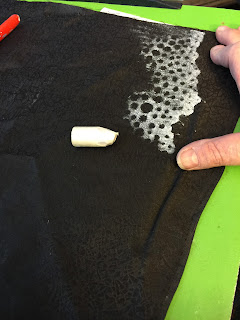 I love icebergs. Maybe it’s because I grew up in the Sunshine
State; who knows? When I was younger, I was surprised to learn that icebergs
are a luminous turquoise, not white. I’d always associated turquoise with the
Caribbean and sandy beaches, not frigid navy blue water where you could not see
the bottom.
I love icebergs. Maybe it’s because I grew up in the Sunshine
State; who knows? When I was younger, I was surprised to learn that icebergs
are a luminous turquoise, not white. I’d always associated turquoise with the
Caribbean and sandy beaches, not frigid navy blue water where you could not see
the bottom.
Blue is my favorite color and any shade that evinces
thoughts of water is the most prized. So color is part of my fascination. As is
the water - my theme for this cycle. And of course, the hidden part: the part
beneath the water that has become a metaphor in all walks of life including
business management, branding, risk assessment and human potential. The symbolism
speaks to me too.
So this Florida girl likes icebergs despite having only seen
one in her life. I saw it while returning from a family vacation in Iceland. Odd,
I’d have thought I’d seen one in
Iceland, not flying over Greenland.
But I was told the Vikings intentionally named their lush home Iceland so no
one would come, and they gave Greenland its name to entice visitors there
instead. When travelers discovered desolate, frozen Greenland, they would
surely never venture to its neighbor Iceland. Or so the legend goes.
So I saw the green rolling hills and rocky cliffs of Iceland
without glimpsing a single iceberg. It wasn’t until the flight home over
Greenland I saw my first (and only). It’s on my bucket list to see more. One
day I will visit Alaska and photo them until my heart is content. Until then, I
have my imagination and my art.
 “Greenland” is a wholecloth quilt painted with Setacolor
soft body acrylic and Jacquard fabric paints and enhanced with Shiva sticks and
Derwent inktense pencils. It is quilted with cotton and polyester threads.
“Greenland” is a wholecloth quilt painted with Setacolor
soft body acrylic and Jacquard fabric paints and enhanced with Shiva sticks and
Derwent inktense pencils. It is quilted with cotton and polyester threads. Due to some unexplained brain malfunction, my piece measures one inch longer than it should. Of course I didn’t discover my error until today. So…Greenland measures 41” H X 30.5 W.











































